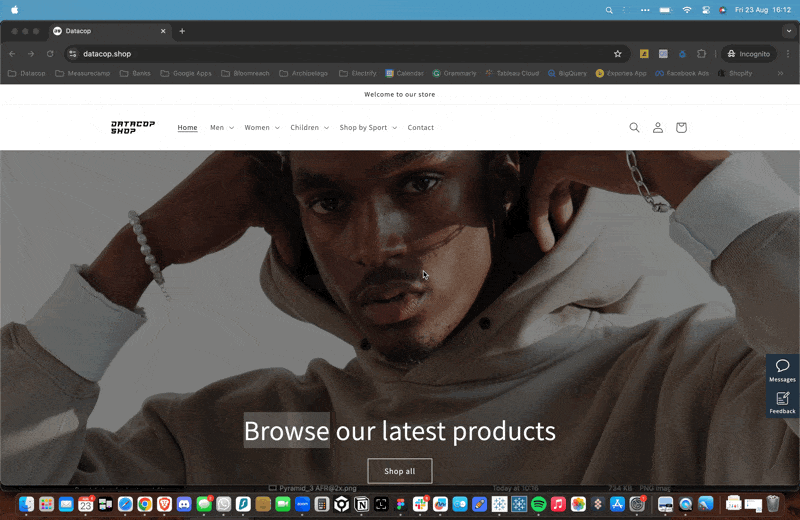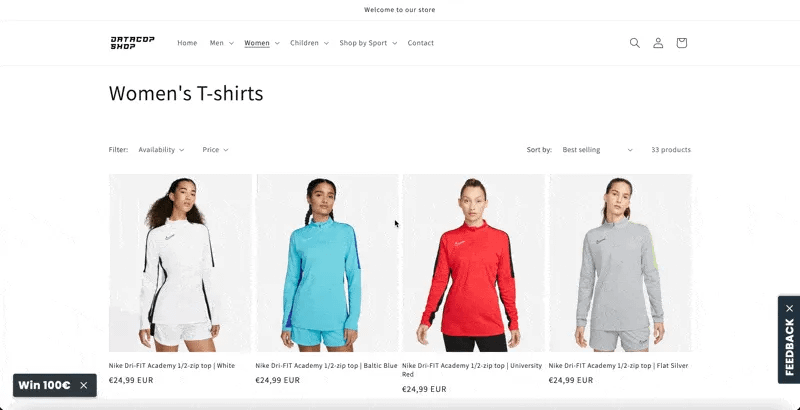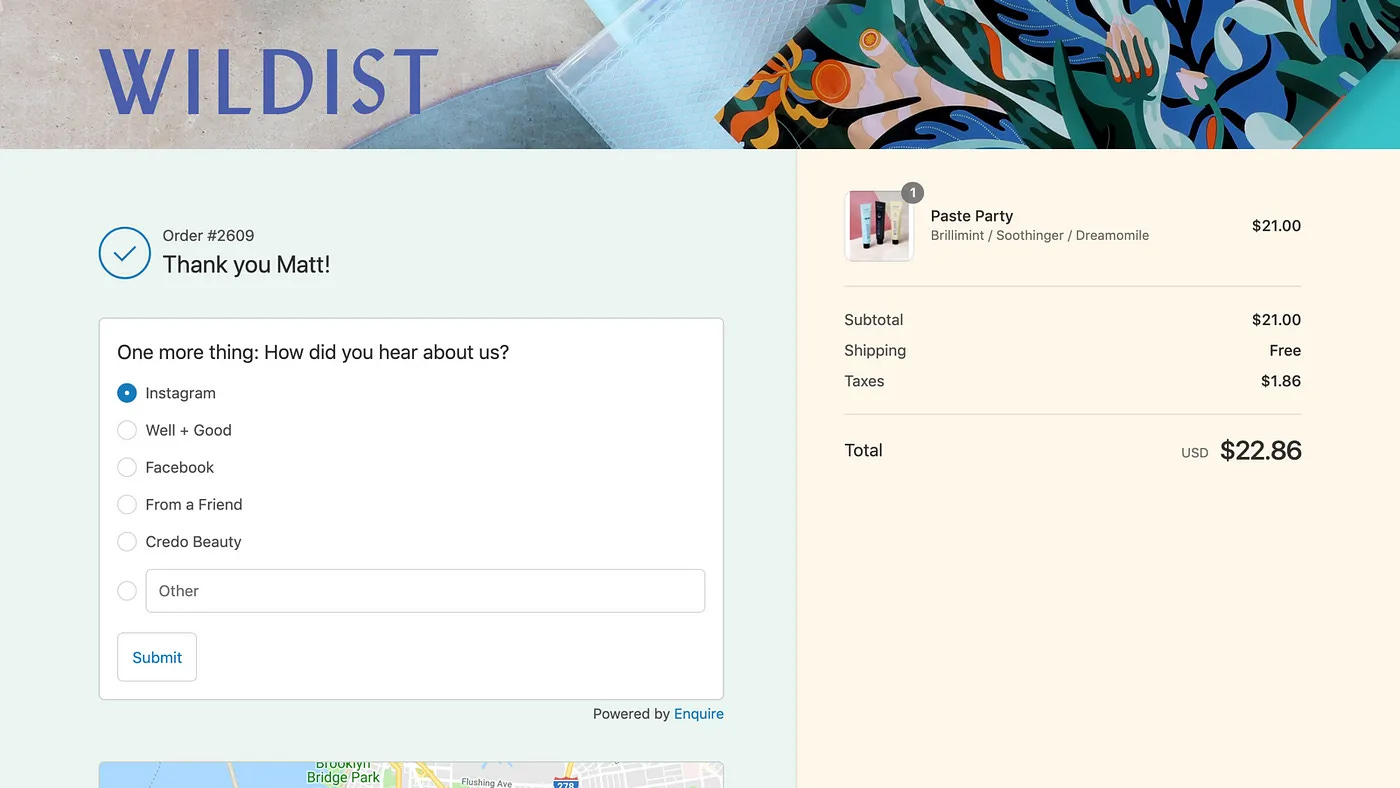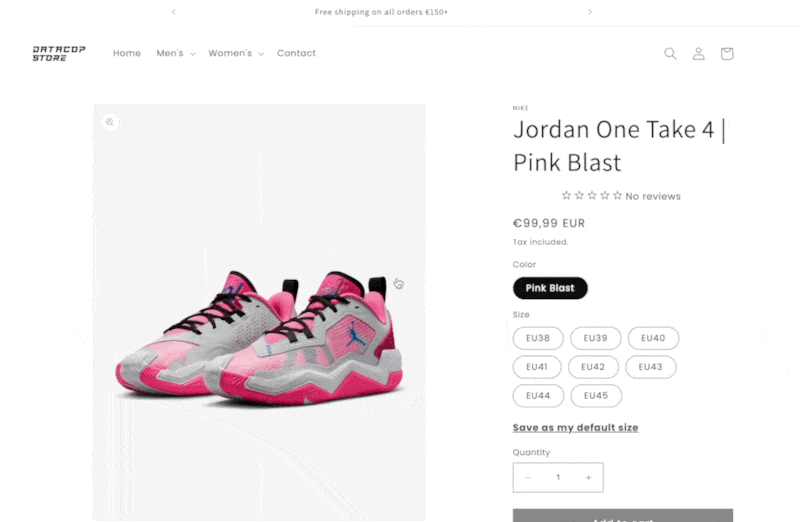An Ultimate Guide to Zero-Party Data Collection Strategies
I've yet to meet a marketer who isn't curious about understanding their customers and website visitors more deeply. Questions such as...
About the Author:
Co-founder of Datacop, agency that fulfils marketing operation roles in large eCommerce companies such as OluKai, Melin, Roark, Visual Comfort and Company, Dedoles and others.
In today's article, we will explore the second key area of expertise for an effective Marketing Operations team: strategies for collecting Zero-Party Data.
If you haven’t yet read about the first area—First-Party Data Collection and Data Quality—you can find the articles here:
Let's begin by defining the term: What is Zero-Party Data?
Zero-party data is that which a customer intentionally and proactively shares with a brand. It can include preference center data, purchase intentions, personal context, and how the individual wants the brand to recognize
To illustrate the significance of Zero-Party Data, consider this example:
Imagine you operate an eCommerce platform specializing in baby care products. Knowing the birth date or expected due date of your customer’s baby can transform your business strategy. With this information, you gain a knowledge of the child’s age throughout their entire lifecycle.
This knowledge enables you to personalize the products displayed on your homepage according to the child's developmental stage. It also helps you tailor newsletter content for the upcoming months and informs product selection for retargeting campaigns throughout the customer's journey.
In fact, we’ve seen this approach successfully implemented by a German baby care retailer (though they are not our client). Their email collection banner not only captured standard details but also included a field asking for the baby's birthdate or expected delivery date.
When we signed up for their newsletter, this is the email we received during the 23rd week of our pregnancy when our baby was roughly the size of a banana.
Here’s the email we received during the 40th week of our pregnancy when our baby was approximately the size of a pumpkin.
And this is the email we received when our newborn was 1 month old.
While not every eCommerce sector has a powerful data point like a child’s birth date in the baby care industry, we believe that every business holds unique information that, when collected, can transform its marketing efforts.
In this article, we’ll explore the types of data that could be particularly valuable for the fashion, furniture, and electronics industries, focusing on customer preferences and purchase intentions. Additionally, we’ll provide a few examples of how to collect this data.
Note: "Zero-Party Data" is also known as customer preference data or customer purchase intent data.
What Questions to Ask?
Fashion Industry
If we operated an eCommerce business in the fashion industry, these are the questions we would ask our customers and website visitors:
What is your gender?
Do you have kids? (This information is particularly valuable if you offer a kids' category)
What is your usual shoe size?
What is your usual t-shirt size?
What is your usual pant size?
What sports are you involved in? (If you offer sportswear, this is valuable information)
Which colours do you like to wear?
What clothing styles do you enjoy wearing the most?
Which other brands, besides ours, have you worn before?
Are you shopping for a particular occasion?
Are you buying for yourself or for somebody else?
Will you need new (boots) for this winter?
Furniture Industry
If we operated an eCommerce business in the furniture industry, these are the questions we would ask our customers and website visitors:
Do you have a home renovation plans?
Do you have any preferred furniture styles, materials, or colors?
What is your living situation? (House or Apartment / number of rooms)
Do you have a garden or outdoor space?
What are your hobbies or interests?
Do you always seek the best-in-class products, or are you looking for the best value for your money?
Is there any furniture that you anticipate upgrading in the near future?
Are you purchasing on behalf of a business?
In our view, the insights gained from the first question on our list can be especially valuable.
Discovering that a customer plans to renovate their entire apartment suggests they have a considerable budget set aside for the project, ready to be spent.
Now, imagine a potential customer enters your store, ready to invest several thousand euros or dollars in the coming months. Wouldn’t you want to ensure that a substantial portion of that budget is spent on your products?
Electronics Industry
If we operated an eCommerce business in the electronics industry, these are the questions we would ask our customers and website visitors:
Do you have a home renovation plans?
What electronics products do you consider to be your favorites?
Do you have any preferences for specific brands of (mobile phones)?
When do you plan to upgrade your (mobile phone)?
What is your experience with a (specific product)?
What types of electronics products do you currently own?
Do you always seek the best-in-class products, or are you looking for the best value for your money?
Are you purchasing on behalf of a business?
What are your hobbies?
Similarly to the furniture industry, identifying customers with home renovation plans can be highly valuable. When renovating an entire apartment, customers are likely to purchase a range of electronics, such as a washing machine, dryer, dishwasher, refrigerator, TV, and more.
Zero-Party Data Collection Strategies
The real challenge, however, lies in how we can effectively gather this data on a large scale without making customers feel like they’re taking a survey.
We recommend two primary strategies:
Avoid asking too many questions at once.
Design a shopping experience where customers naturally provide valuable data about their preferences and shopping intentions without feeling intruded upon.
Fortunately, there are several ways to achieve this:
1. Email (or SMS) Collection Banners
Email collection banners offer an excellent opportunity to gather Zero-Party Data. Imagine adding two questions right after a customer provides their email address. By placing the questions after the email submission, you ensure that there’s no added friction to the email collection process. The experience would look something like this:
We’ve actually developed an email collection template based on this approach, which you can use within your Bloomreach Engagement project—completely free of charge!
For a detailed explanation of how to work with these templates, along with instructions on how to access them, you can read the full article here:
2. Website Micro Surveys
What we truly value about Bloomreach Engagement is its flexibility. For instance, while there are standalone tools like Refiner.io for website micro surveys, Bloomreach Engagement allows you to create weblayers that function as micro surveys directly on your website. These weblayers enable you to ask visitors valuable questions and capture their responses for future personalization.
In fact, we’ve created templates for these types of weblayers, which you can access free of charge! Here’s a preview of how the experience looks:
Here is a full article that provides a detailed guide on how to leverage these weblayers in your Bloomreach Engagement project.
3. Order Confirmation Page Survey
The order confirmation page is an excellent place where we can learn more about your customers' preferences. Since the customer has already completed their purchase, you don’t need to worry about adding any friction to the conversion process. Here’s an example of how the survey on order tracking page might look:
4. Dynamic Website Block
You can embed a dynamic block directly on your website that engages visitors with a single question. This block could look something like this. Alternatively, you can use a dynamic block that incorporates images instead of text for a more visual experience.
5. Save Your Size Button
If you're looking to collect customers' preferred sizes, you can introduce a 'Save Your Size' button directly on the product detail page, just as we did on our demo store. Here's an example of how the experience might look:
Once a customer provides their preferred size, a multitude of personalization use cases become available. For example, you can automatically preselect the size for the customer on every subsequent product detail page, which, according to one of our previous A/B tests, can lead to an increase in the number of products added to the cart.
Alternatively, you could introduce a personalized quick-add button that enables customers to add any item to their cart directly from a collection page. Below, you can compare the standard quick-add button experience with the personalized version:
The final use case I'll mention is the 'Notify Me When Available' button directly on a collection page. If I know the customer's preferred size, I can offer them the option to be notified when an item is back in stock, right from the collection page.
6. Website Questionnaire
Several retailers have successfully integrated a questionnaire into their website experience, similar to what Doe Beauty has implemented. Attached are screenshots showcasing their method for gathering customer preferences.
7. Enhanced Search Feature
An effective way to capture customer preferences could be through an enhanced search feature. Below is an example of an enhanced search experience implemented by marketplaces specializing in real estate sales.
8. Single Question Email Snippets
We previously discussed dynamic website blocks that ask visitors a single question. A similar strategy can be applied to newsletters as well. Below is an example of a single-question format implemented in a newsletter sendout:
9. Two-way SMS Messaging
Bloomreach Engagement also provides a two-way SMS messaging system. This enables us to conduct microsurveys via the SMS channel, allowing customers to respond directly through text messages. Bloomreach Engagement captures and stores these responses, which we can then utilize for personalized interactions in the future.
If you found this post valuable…
We hope you found value in this article. If you did, we'd appreciate it if you subscribed (at no cost!) to stay updated with our latest publications.
Additionally, if you think someone else might benefit from this information, we would greatly appreciate it if you could share this article using the button below.
























